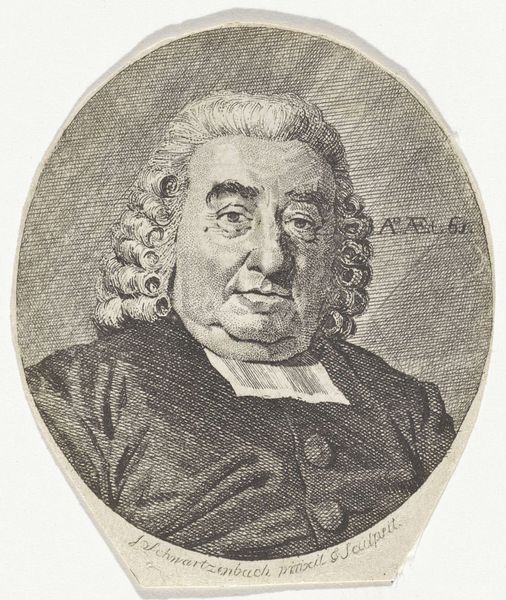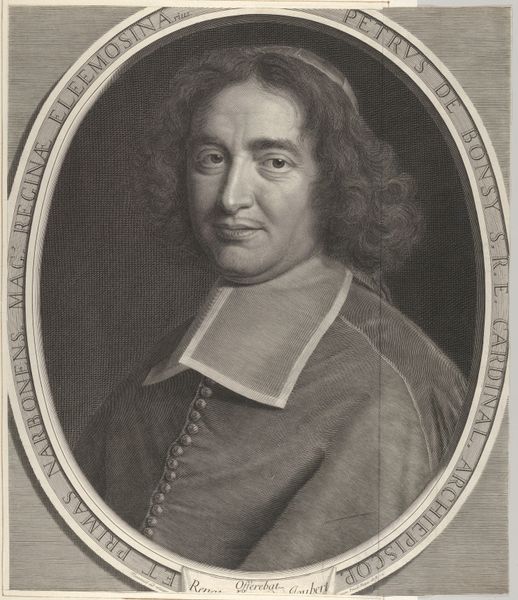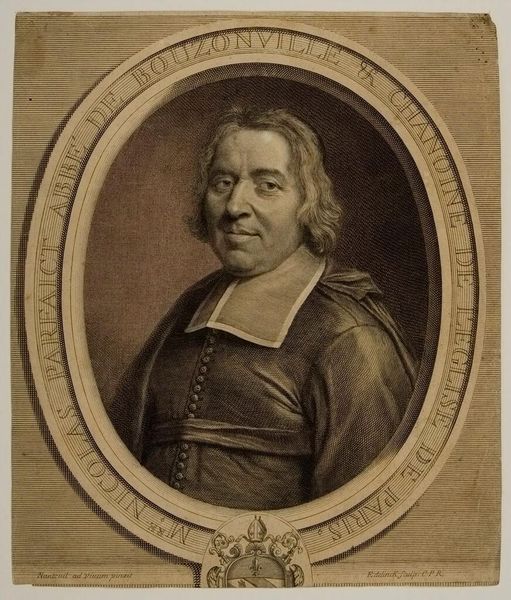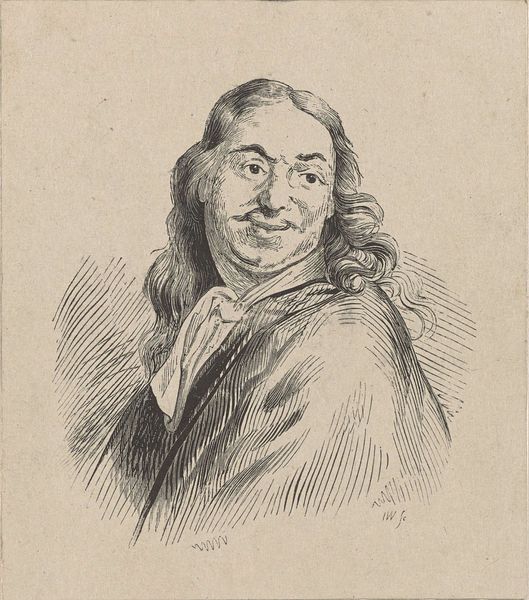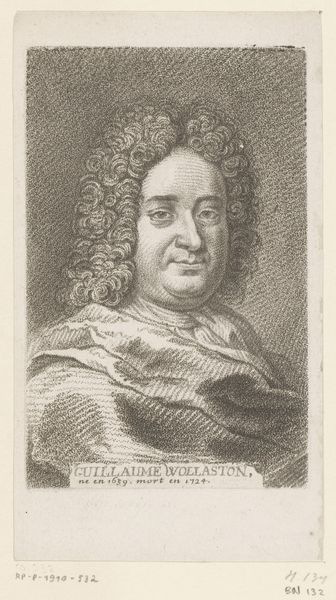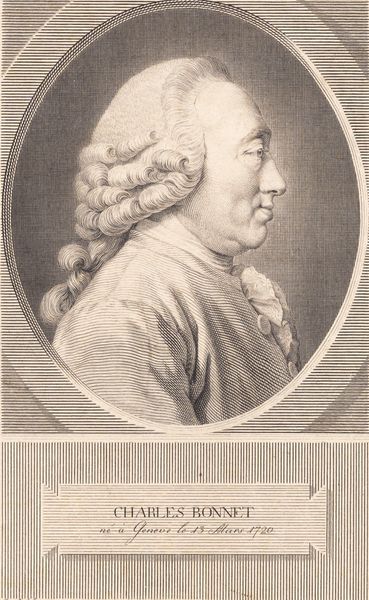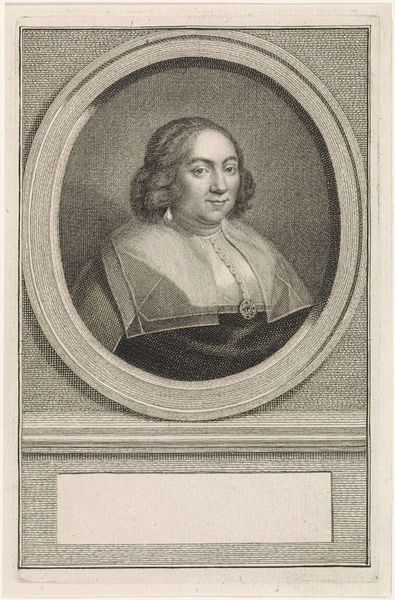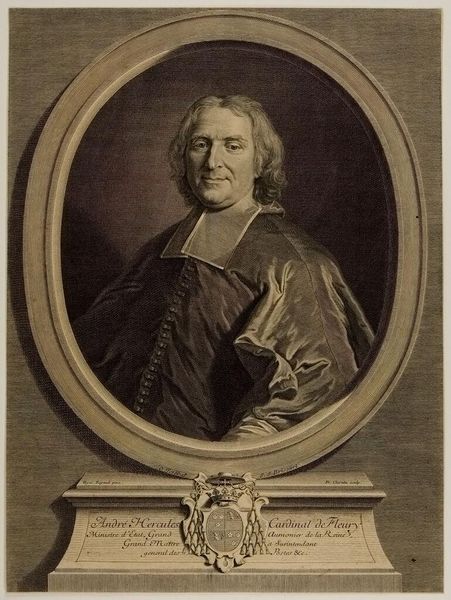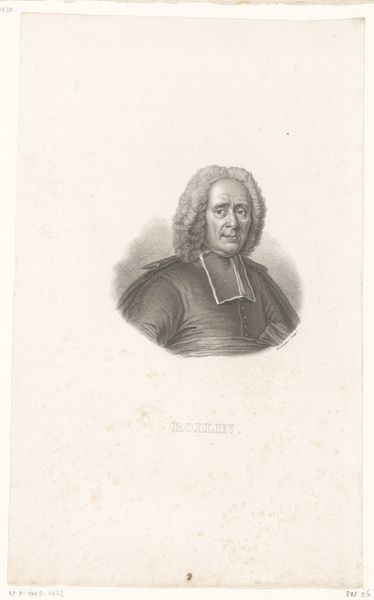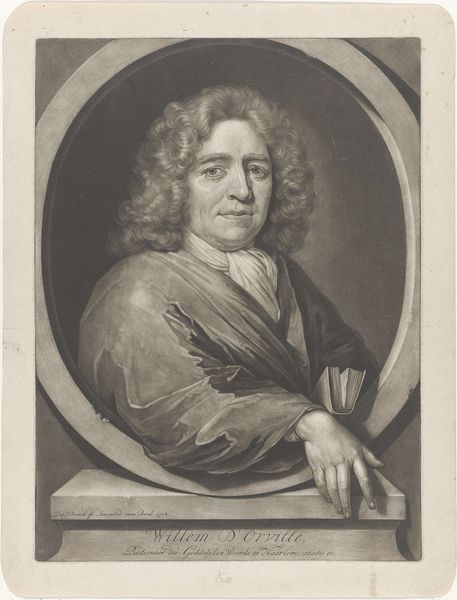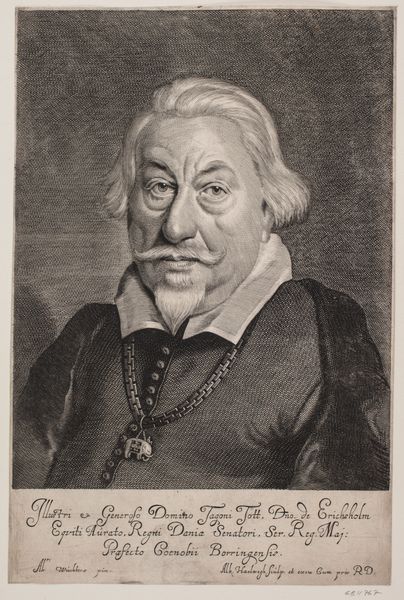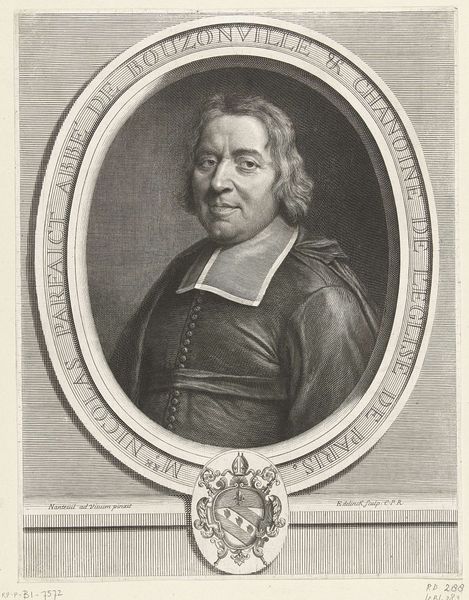
Dimensions: height 91 mm, width 82 mm
Copyright: Rijks Museum: Open Domain
Editor: This is *Portret van Henrik Antoni Tollé*, made in 1781 by Jacob Schwartzenbach using pencil. The soft shading gives it a really gentle, almost pensive mood. How do you interpret this work, thinking about the social context? Curator: This portrait drawing gives us a glimpse into the social and professional circles of the late 18th century. Portraiture was, of course, a status symbol. Do you notice anything about his attire, and what that might tell us? Editor: I see the wig and the buttoned coat. It looks like pretty standard formal wear for the time. So, was portraiture like this a way of cementing one's place in society? Curator: Precisely. Think of the Rijksmuseum's function too: displaying it reinforces cultural norms and who gets remembered. The sitter’s age is inscribed in the image - "A. Et 61". Consider the intent of committing to drawing as the method, and what that suggests about displaying or recording a likeness and stature versus other visual methods. What’s your take on that? Editor: I hadn't thought about that. Maybe drawing felt more intimate, less imposing than a full oil painting? More...personal? Curator: Yes, a "softer" more "humane" medium of portrayal for this moment in society perhaps. Consider how the medium affects our perception today versus at its inception. Has its intimacy been lost as its display suggests power? Editor: It’s fascinating how even a simple pencil drawing can open up so much about the society it came from. I’ll never look at portraits the same way. Curator: Indeed. Understanding the context in which art is made and displayed allows us to view it through multiple lenses.
Comments
No comments
Be the first to comment and join the conversation on the ultimate creative platform.
